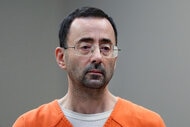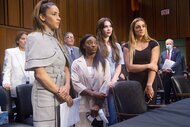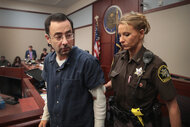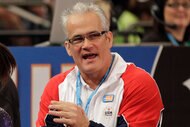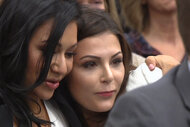Create a free profile to get unlimited access to exclusive videos, breaking news, sweepstakes, and more!
Who Is Amanda Thomashow And What Happened When She Reported Larry Nassar?
Amanda Thomashow’s story is highlighted in the new HBO documentary "At the Heart of the Gold."
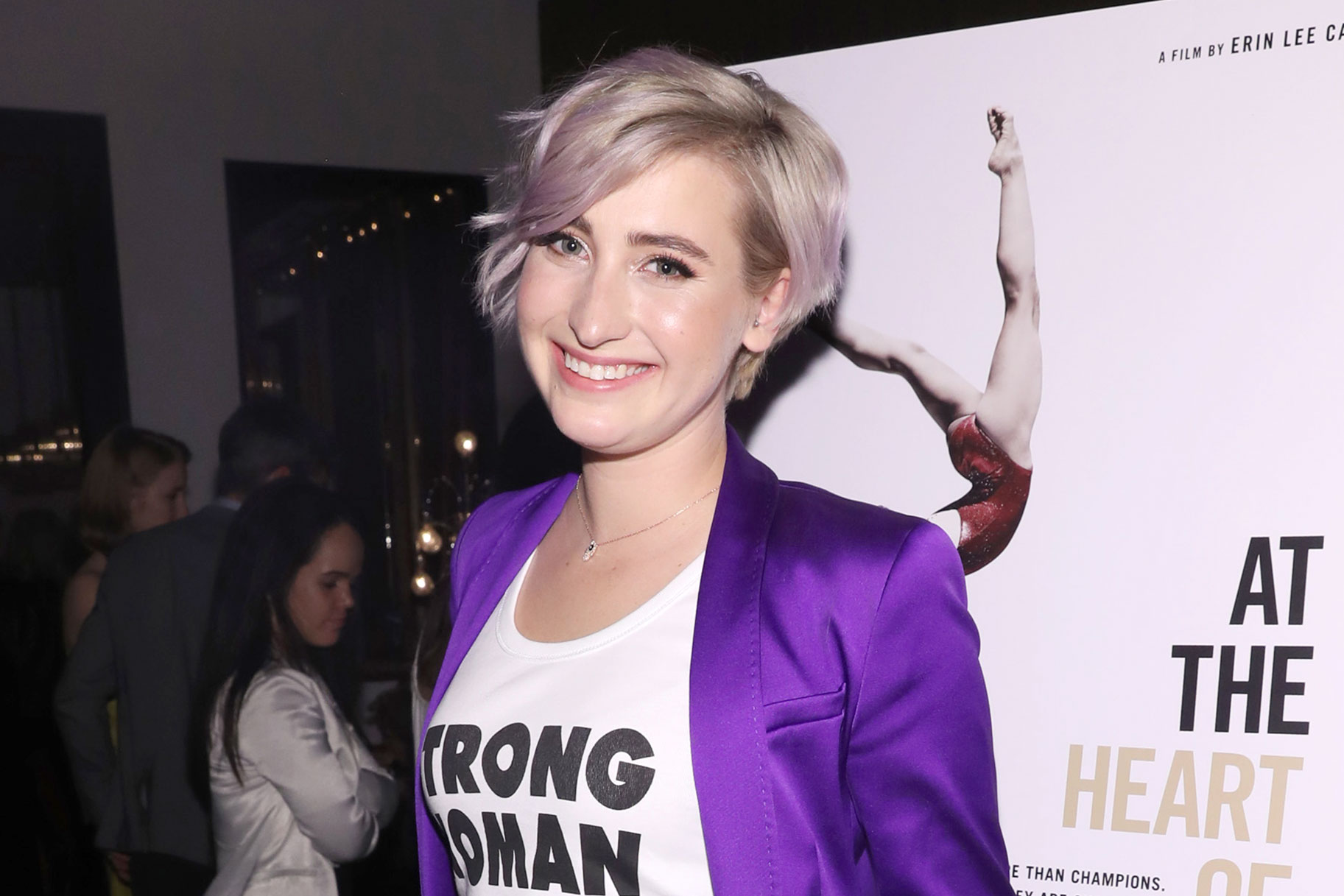
Former doctor Larry Nassar may be serving time for his many, many crimes against girls and women, but in the wake of one of the biggest scandals to ever hit higher education and the gymnastics world, questions still remain. How could Nassar’s abuse have been allowed to continue for so long, and was it ever reported before he was investigated in 2016?
Amanda Thomashow was one of many women who tried to bring Nassar to justice early on, having reported his abuse to officials at Michigan State University in 2014. Her story, in part, is told in "At the Heart of The Gold," a documentary by Erin Lee Carr airing on HBO starting May 3.
Thomashow, then a 24-year-old who routinely suffered from hip pain stemming from old cheerleading injuries, sought out Nassar’s help in March of 2014, CNN reports. She explained that she had no reason to doubt that he was a good option — her pediatrician mother knew of him and routinely recommended his services to others, and her little sister was also one of his patients. But what happened during their appointment, she would later describe as “awful.” After having her lie down on a table, he fondled her breasts and touched her vagina for an hour, she told CNN.
During that time, he also “made an off-hand comment about how my boyfriend needed to give me better massages,” Thomashow told NBC News.
Nassar did not stop, despite her pleas, until she physically pushed him off of her, she said, via CNN. He then refused to let her leave until she booked a follow-up appointment, which she never went to.
Thomashow recalled that fateful day with Nassar during an interview with Huffington Post earlier this year.
“I remembered being in his exam room, after he assaulted me, and there were all of these photos on the walls of the women who we found out later he had abused,” she said. “I just remember sitting in there with all these little girls in these photos smiling at me, and thinking, ‘If he’s abusing me, is he abusing you too?’”
She knew immediately that what Nassar had done to her was not right, she said.
"Something awful happened in that examination room ... life had taught me enough to know that what happened was wrong," Thomashow told CNN. "After a lot of internal struggle, I knew that if I did not report it, I would not be able to sleep. If I didn't say something and protect possible victims, I wouldn't be OK with that."
She reported her concerns to another doctor at MSU, and was then referred to Kristine Moore, assistant director of MSU’s Office of Institutional Equity, which lead to a Title IX investigation, according to CNN.
She met with Moore and an MSU detective two months later, in May, to give a statement, and she initially felt that they had understood her concerns, the outlet reports. But in July of that year, Moore called Thomashow to the school for a meeting to go over the findings of the investigation: the school had concluded that Nassar done nothing wrong, aside from his “troubling” “failure to communicate” about his methods.
“We cannot find that the conduct was of a sexual nature. Thus, it did not violate the sexual harassment policy. However, we find the claim helpful in that it allows us to examine certain practices at the MSU Sports Medicine Clinic,” the report emailed to Thomashow read, per CNN.
She felt “ashamed” and “embarrassed” after reading their report, she told the Huffington Post.
“I felt stupid and small for having reported something that I was so sure was sexual assault, and then to be told that it wasn’t ― I started to doubt myself, for years,” she said.
Unbeknownst to Thomashow at the time, Nassar received a different version of the report, effectively warning him that his “failure to adequately explain procedures such as these invasive, sensitive procedures” was a liability to the school, CNN reports. (It was a report that Thomashow did not know existed, much less got to read, until 2017.)
University police forwarded their findings to local prosecutors, but they declined to press charges against Nassar the following year, though Assistant Prosecuting Attorney Steve Kwasnik did say in an email to campus police that Nassar needed “to do a much better job of explaining what he is doing to the patient who rightfully might feel violated by his technique,” according to CNN.
Thomashow was not vindicated until 2016, when campus police told her that they would be reopening her case against Nassar, who then was facing a number of allegations and mounting backlash, NBC News reports. It was the beginning of the end for Nassar, who was ultimately sentenced to 60 years in federal prison for possession of child pornography, in addition to to a 175-year sentence in state prison for molesting multiple girls, according to NBC News.
Thomashow, who previously only spoke about Nassar’s abuse anonymously, came forward in recent years using her full name. She explained her decision to do so during an interview with the Lansing State Journal last year.
“What defines me is where I go from here and how I use my scars to help strengthen myself and other women, and not letting it be this horrible thing that just destroyed me,” she said. “Instead, it’s this horrible thing that destroyed me but I lived and I’m here to tell my story. And I’m here to lift while I climb.”
